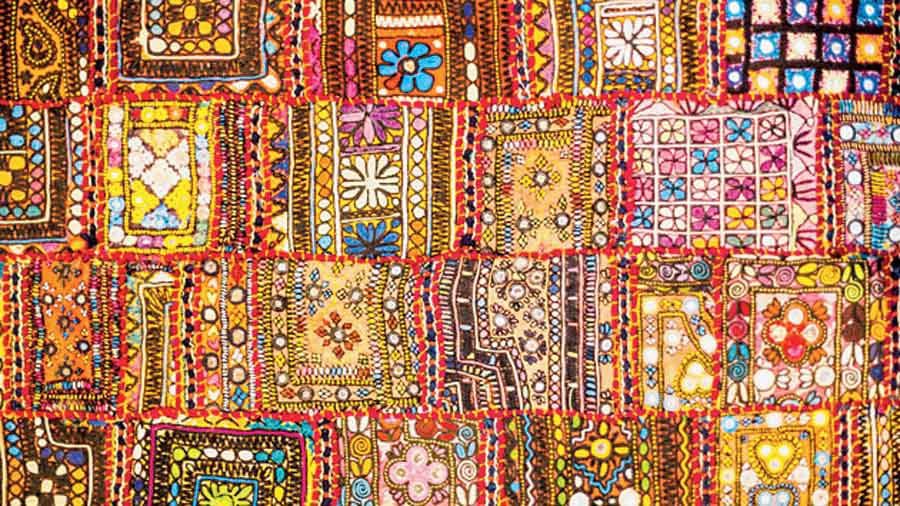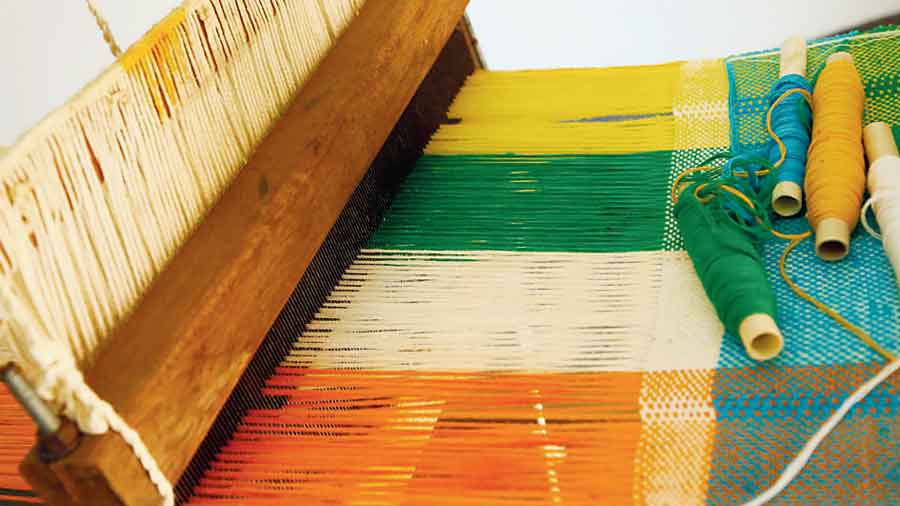Whoever said money can’t buy happiness simply didn’t know where to go shopping; this being the mantra of the times we live in now. There’s a sense of urgency, a therapeutic illusion and a halo surrounding the act of shopping. All around is a bombardment of material goods being showered on us. Lovely images consume us. Of late, even lovelier words have started accompanying the images. Words that are meant to guide and not confuse us in our choices; words that seem familiar but are being bandied about without what seems like much thought; it is these words that this column seeks to decode.
Hand spun: All textiles are made of yarn. A hand spun fabric is one whose yarn has been spun by hand on that spinning wheel made famous by none other than the Mahatma. All other textiles are made with yarn which is mill spun. Hand spun yarn can range from a very fine air like yarn spun in humid regions like Bengal, whereas in dry regions like Gujarat a thicker yarn is the norm. Hand spinning is a very labour intensive and highly skilled task.
Hand woven: Yarns, be they hand spun or mill spun, are then woven to create the textile. This process too can either be performed by hand or be woven on a loom that’s fuelled by power. In a hand woven textile both the booti and the weave are entirely handmade, akin to hand embroidery where each pattern is slowly woven by hand on a hand loom.
Hand loom: A loom that’s powered only by human hands and feet. Textiles woven on a handloom have a distinctively softer feel with no stiffness whatsoever in any part of the fabric. Weaving on a handloom is a labour intensive process.

Power loom: A loom that runs on power and mass produces fabric of a quality far inferior to that of a handloom. These days, more often than not, most baluchari and banarsi saris too are woven on power looms thus imparting a stiff feel to them despite the yarn being pure silk.
A quick way to spot a power loom finish is to check the underside of the fabric. If it is crammed with threads, mostly unruly and with cut edges, then it’s certainly a power loom product. A handloom underside is neat and clean since each booti has a beginning and an end, neatly entwined within the pattern, just as if it was hand embroidered!
Khadi: The most coveted amongst all textiles today, khadi refers to a textile which is both hand spun and hand woven fabric with a natural yarn, cotton, silk or wool. Khadi is very porous, airy, light weight; it’s cool in summers, warm in winters and tops the comfort chart. All khadi is made on a hand loom, but not all handloom textiles are khadi since mill spun yarn can also be woven on a handloom. Finer khadi is also sometimes referred to as khadi-muslin.
Muslin: This is a simple weave cotton textile, ranging from fine khadi muslin to the mill spun thicker coarse variety. Fine muslin is coveted for garments while thick muslin is also used in furnishings and food and pharmaceutical industries too.
The columnist is the founder-CEO of Necessity-SwatiGautam, a customised brand of brassieres.











